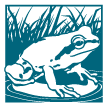
| Friends of Five Creeks |
Native Creekside Plants for the East Bay
For creekside gardens that are beautiful, easy to care for, drought-tolerant, erosion-resistant, and welcoming to native butterflies, insects, and birds, try these East Bay natives. Although drought tolerant, most need some dry-season watering until established. Water them only occasionally, slowly, and deeply.
TREES
- Coast live oak (Quercus agrifolia): massive, rounded evergreen tree.
- Big-leaf maple (Acer macrophyllum) Large deciduous streamside tree with handsome fruit.
- Box elder (Acer negundo) Fast-growing deciduous streamside tree with handsome fruit.
- California buckeye (Aesculus californica) Small to medium deciduous tree with fragrant, showy flower spikes, loses leaves early to display large handsome nuts.
- California bay (Umbellularia californica) Large, fast, often multi-trunked evergreen; fragrant leaves good for seasoning.
- White alder (Alnus rhombifolia) Fast growing deciduous streamside tree with winter catkins, cone-like fruits birds love. Red alder (Alnus rubra) also does well but needs more water.
- Willow (Salix spp.) Small brushy deciduous tree with colorful bark, spring catkins.
LARGE TO MEDIUM SHRUBS
- Creek dogwood (Cornus californica, rubra): Large streamside deciduous shrub or small tree with small white flowers, colorful red bark, and fruits that birds love. Spreads by rooting branches and will take over.
- Blue elderberry (Sambucus mexicana) Large deciduous shrub or small tree with feathery foliage, white flower heads, blue berries that make delicious jam.
- Coffeeberry (Rhamnus californica) Large evergreen shrub good in shade; birds love black berries.
- Toyon (Heteromeles arbutifolis) Large evergreen shrub with white flowers, red berries. Shade or sun.
- Silktassle (Garrya elliptica) Large evergreen shrub with beautiful drooping catkins in early spring.
- Ninebark (Physocarpus capitatus) Large, deciduous, shade-tolerant shrub with drooping branches.
- California wild rose (Rosa californica) Medium open, drooping shrub with pink flowers in spring. Thorny, spreads by runners, can form dense clumps.
- Oceanspray (Holodiscus discolor) Medium deciduous shrub with airy flower sprays.
- Twinberry (Lonicera involucrata) Medium vine-like, semi-deciduous shrub with long leaves and handsome yellow-and-red flowers; hummingbirds love it.
- Red-flowering currant (Ribes sanguineum) Medium shade-loving, drought-tolerant, fast-growing deciduous shrub with early spring red flowers that hummingbirds love.
SMALLER SHRUBS, HERBS, GROUNDCOVERS, FERNS
- California blackberrry (Rubus ursinus) Trailing evergreen with white flowers; excellent shade groundcover and slope stabilizer, can be slow to establish, but eventually can form dense stands. Has furry prickles rather than sharp thorns, and three leaflets, not five like invasive Himalayan blackberry. Not much fruit.
- Native honeysuckle (Lonicera hispidula) Small trailing vine with gray-green leaves, honeysuckle flowers; good vining groundcover with other plants such as wild strawberry.
- Snowberry (Symphoricarpos mollis, albus) Small deciduous shrub with small pink flowers, white berries, spreads by runners to form small thicket.
- Mugwort (Artemisia douglasiana, suksdorfi) Tough, fragrant-leaved, drought-tolerant herb; runners can be invasive.
- Sticky monkeyflower (Mimulus aurantiacus) Small, drought tolerant evergreen shrub with gold flowers. Sun or shade.
- Douglas iris (Iris douglasiana) Tough and drought tolerant, with beautiful spring flowers, does well under oaks.
- Wild strawberry (Fragaria vesca, chiloensis) Low, shade-tolerant groundcover with white flowers, edible fruits.
- Bee plant (Scrophularia californica) Handsome semi-evergreen shade-tolerant herb spreading by runners, with small brownish flowers that native bees love.
- Alum root (Heuchera micrantha) Low-growing, shade-loving herb with dark-green leaves, sprays of airy flowers.
- Cow parsnip (Heracleum lanatum) Stunning huge divided leaves, big white flower clusters up to 5' tall. Self-seeds. Skin irritant for some people.
- Sword fern (Polystichum munitum) Handsome evergreen, drought-tolerant fern.
- Gray rush (Juncus patens and relatives) Forms graceful clumps that can hold banks; tough and tolerates both flooding and drought.
- Barber's sedge, whiteroot (Carex barbarae) Beautiful big sedge that holds bank, spreads by runners and can form dense stands well up from waters edge.
- Creeping wild rye (Elymus triticoides) Tough, large native grass that spreads by runners, tolerates moisture, drought, and salt, can form dense stands and hold banks.
FOR CREEK-FRIENDLY GARDENING
- Minimize paving; landscape and grade so that water soaks into soil and doesn't run to storm drains, creeks, and the Bay.
- Mulch deeply; use compost or other natural fertilizers that release nutrients slowly, so they stay in your yard and don't run off to creeks and the Bay.
- Control pests with non-toxic alternatives; especially avoid products containing diazinon, chlorpyrifos, and pyrethroids, which poison aquatic life. Consumer formulations of herbicides such as glyphosate (Roundup and others) may have surfactants that are lethal to stream life, even though the active ingredient would be harmless. Read cautions carefully, and avoid any possibility of runoff.
More information: CalFlora's database of native plants, California Native Plant Society's East Bay chapter, local native-plant nurseries.